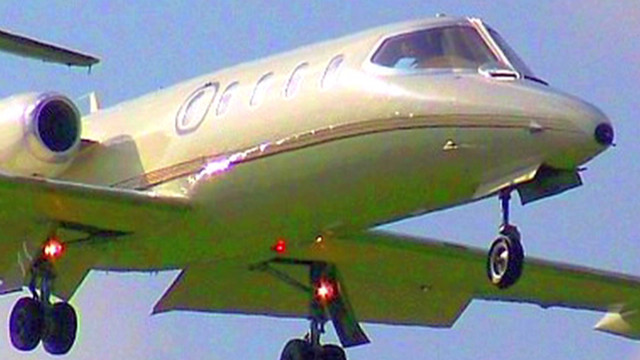
Rivera's plane's linked to ex-con
That list includes
singer/actress Aaliyah, golfer Payne Stewart and musicians Ronnie Van
Zant, Buddy Holly and Ritchie Valens. In 2008, Travis Barker of
Blink-182 and Adam "DJ AM" Goldstein were critically injured -- and four
other passengers were killed -- when their charter jet crashed on
takeoff in South Carolina.
Overall, the industry is
overwhelmingly safe. Yet Sunday's crash in northern Mexico that killed
Rivera and six others, including a pilot and co-pilot, has focused
attention on charter safety.
 The legacy of Jenni Rivera
The legacy of Jenni Rivera
 Jenni Rivera's family and fans mourn
Jenni Rivera's family and fans mourn
 Singer Jenni Rivera dies in plane crash
Singer Jenni Rivera dies in plane crash
One red flag, experts say, is the 43-year-old plane's age.
"The Learjet is a pretty reliable airplane, but this one was really old," says Ladd Sanger, an attorney and licensed pilot who specializes in plane crashes. "As a general rule, over 40 years old, and I think you need to be concerned."
However -- on its own -- age is not an indicator of an airplane's safety, says John McGraw. an ex-FAA deputy administrator.
"This plane was 10 minutes in flight, so you wouldn't expect that to be a factor in this type of accident," he said.
In general, experts say
travelers can reduce their risk of choosing a charter that's poorly run
-- or even illegal -- by asking a few smart questions.
Pilots
Make sure the charter is well established and employs its own pilots, experts say. Leonard Goldberg is president and owner of Gold Aviation,
a 17-year-old outfit based in Ft. Lauderdale, Florida, that flies six
aircraft. "Our search process is very stringent," he says. "We see
dozens of candidates at least before we settle on a pilot, which is
pretty common, for good quality operators."
The FAA doesn't impose
age limits for charter pilots, although pilots for airliners and other
commercial carriers must retire at age 64. Charter pilots must pass
flight medical exams, which increase in frequency with age.
FAA certificate
In the United States,
ask to see the charter operator's FAA Part 135 air carrier certificate.
It's what legally defines an operator as a charter carrier. "It should
be posted inside their building," Sanger says.
Brokers
Be aware that if you use
a broker instead of booking directly from a charter operator, you're
putting your journey in the hands of a middleman. Critics call it "jet
roulette" because you're essentially trusting the broker to hire a safe
and legal charter plane.
Maintenance
Ask charter operators if
their firm performs its own aircraft maintenance. Find out if training
for the charter company's mechanics is approved by the aircraft
manufacturers.
Safety audits
Many charters and
brokers hire outside companies to oversee, rate and suggest improvements
for their safety practices. Ask about safety audits.
Insurance
Sanger says he has seen
more than his share of illegal "bootleg" charter operations, and one way
to easily smoke them out is to ask about their insurance liability.
Depending on the value of the plane, Goldberg says look for a range
between $5 million and $300 million. "Get a copy of the policy," Sanger
says."If they don't have at least a $10 million policy and you're
chartering a jet -- run."
The FAA does require charter companies to carry insurance. But it does not require insurance for non-charter private planes.
That makes it very
tempting, Sanger says, for private plane owners to rake in fat profits
by pretending to be a legal charter operator.
"They need to pass a law that says you have to have insurance on any airplane, just like they do cars," he says.
When contracting with a
non-U.S. charter operator, it gets more complicated. Rules and
regulations are different in every country, underscoring the importance
of grilling the operator about maintenance, documentation and oversight.
Appearances can mean a lot. "Sometimes all you need to do is look at a
plane to know you don't want to get on it," Sanger said.
Deadly charter accidents increased in the United States last year, according to the FAA,
up from six fatal accidents in 2010 to 16 in 2011, when pilots logged
more than 3 million hours in flight. Deaths rose from 17 to 41.
Worldwide so far this
year, out of more than 17,600 business jets -- which include small
private and charter planes -- there have been 12 major accidents and 25
deaths, according to the Flight Safety Foundation.
Source: http://edition.cnn.com
No comments:
Post a Comment